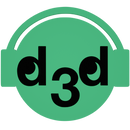Kate G. - April 07 2024
AnycubicSlicer: A Comprehensive Review and User Guide

AnycubicSlicer is a slicing software designed to optimize the 3D printing experience for Anycubic printer users. AnycubicSlicer is an open-source, slicing software based on PrusaSlicer. With a user-friendly interface, advanced features, and seamless integration with Anycubic printers, AnycubicSlicer has become a go-to tool for Anycubic users. In this in-depth review and user guide, we will explore the key features of AnycubicSlicer, provide tips for maximizing its capabilities, and showcase its potential to elevate your 3D printing endeavors.
Setting Up Anycubic Slicer
Downloading and Installing Anycubic Slicer
To download and install Anycubic Slicer, you can visit the Anycubic Website you can usually find software downloads in the support or downloads section of the website.
1. Locate Anycubic Slicer in the downloads section. It might be listed under software or firmware downloads. Choose Your Operating System: Anycubic Slicer is available for Windows, Mac, and Linux. Select the version that corresponds to your operating system.
Download Link:
https://store.anycubic.com/pages/anycubic-slicer
2. Download the Installer: Click on the download link for the version of Anycubic Slicer that you need. This will start the download process. Once the download is complete, locate the installer file (it's usually a .exe file for Windows, .dmg for Mac, or .deb/.rpm for Linux). Double-click the installer file to begin the installation process.

3. Follow Installation Instructions: Follow the on-screen instructions to install Anycubic Slicer on your computer. You may need to agree to terms and conditions and choose an installation directory. After the installation is complete, you can launch Anycubic Slicer from your desktop shortcut (if created) or by searching for it in your applications menu.
Configuring Printer Settings and Profiles
Once Anycubic Slicer is installed, you can configure preferences such as printer settings, slicing profiles, and other options according to your requirements.
Set Up A Printer Profile In AnycubicSlicer
When initiating Anycubic Slicer for the first time, it prompts users to establish a machine profile by selecting their specific printer model, such as the Anycubic Kobra 2, etc. This step is crucial as it ensures compatibility and accuracy in the printing process by loading default settings tailored to the chosen printer. Within the machine profile, various parameters, including bed settings, speed settings, and technical configurations, are predefined to match the specifications of the selected printer model. While advanced users may opt to customize certain settings, most users can rely on the default configurations for successful printing. Confirming the selection of the correct printer profile solidifies the association between the software and the printer, laying the groundwork for efficient and accurate 3D printing operations.
Anycubic includes a lot of pre-configured printer profiles, which makes setting up very easy.
Importing A 3D Model To AnycubicSlicer
Importing a 3D model into AnycubicSlicer is a straightforward process. Navigate to the "File" menu and select "Import" or "Open File" Locate the 3D model file on your computer, which is typically in formats like .STL or .OBJ, and select it. Alternatively, you can drag and drop the file directly into the AnycubicSlicer interface. Once imported, the 3D model will appear in the software's workspace, ready for further manipulation, scaling, positioning, and slicing.
AnycubicSlicer User Interface
Moving, Scaling & Rotating
In AnycubicSlicer, manipulating a 3D model involves three primary actions: moving, scaling, and rotating. To move a model, select it and use the translation handles or input precise values in the software's controls. Scaling allows you to adjust the size of the model, either uniformly or along specific axes, by dragging scale handles or entering scale values. Rotating a model involves selecting it and using rotation handles or specifying rotation angles to orient it as desired. These operations enable users to position and prepare 3D models optimally for printing on their Anycubic 3D printer within AnycubicSlicer's intuitive interface.




